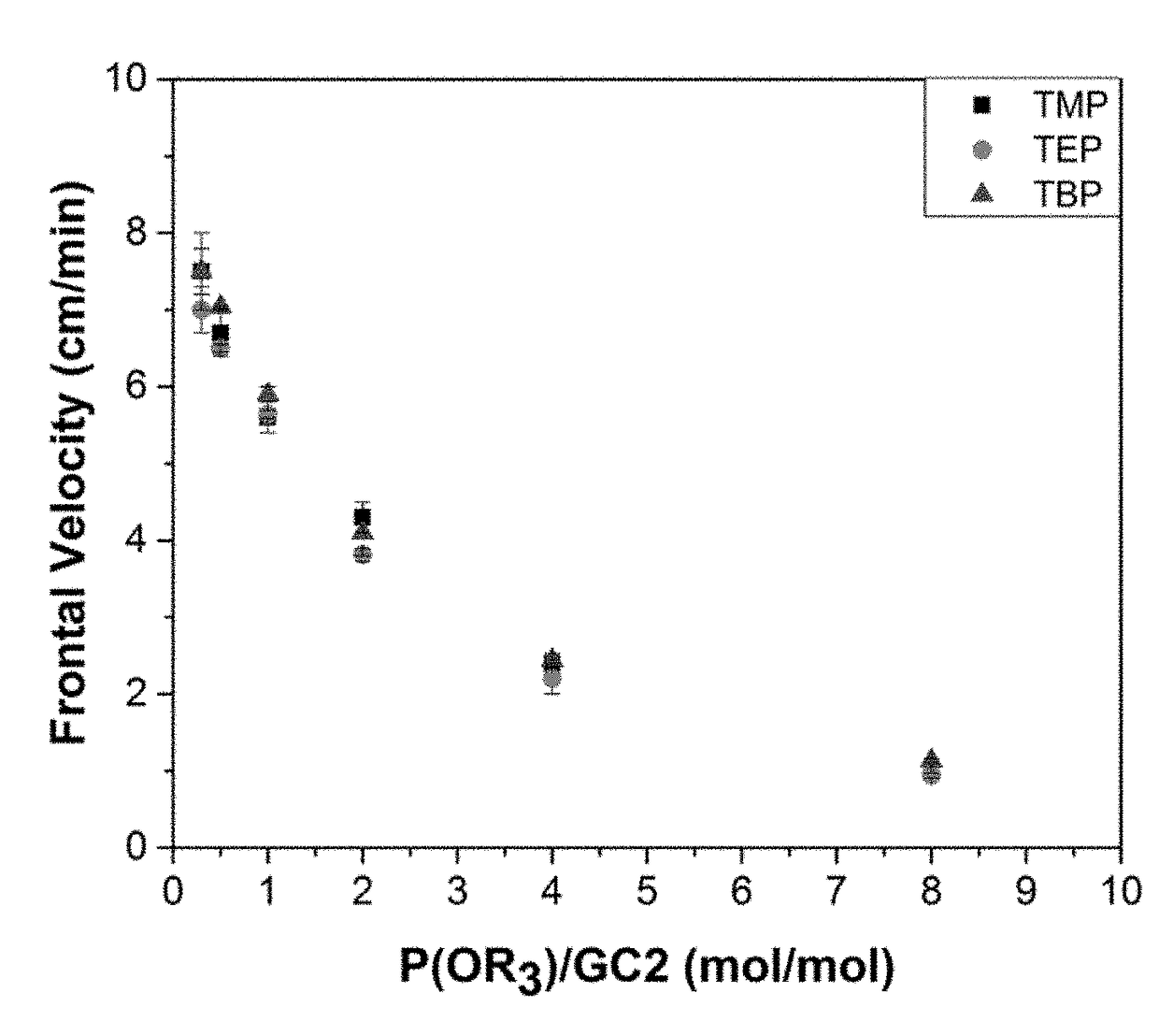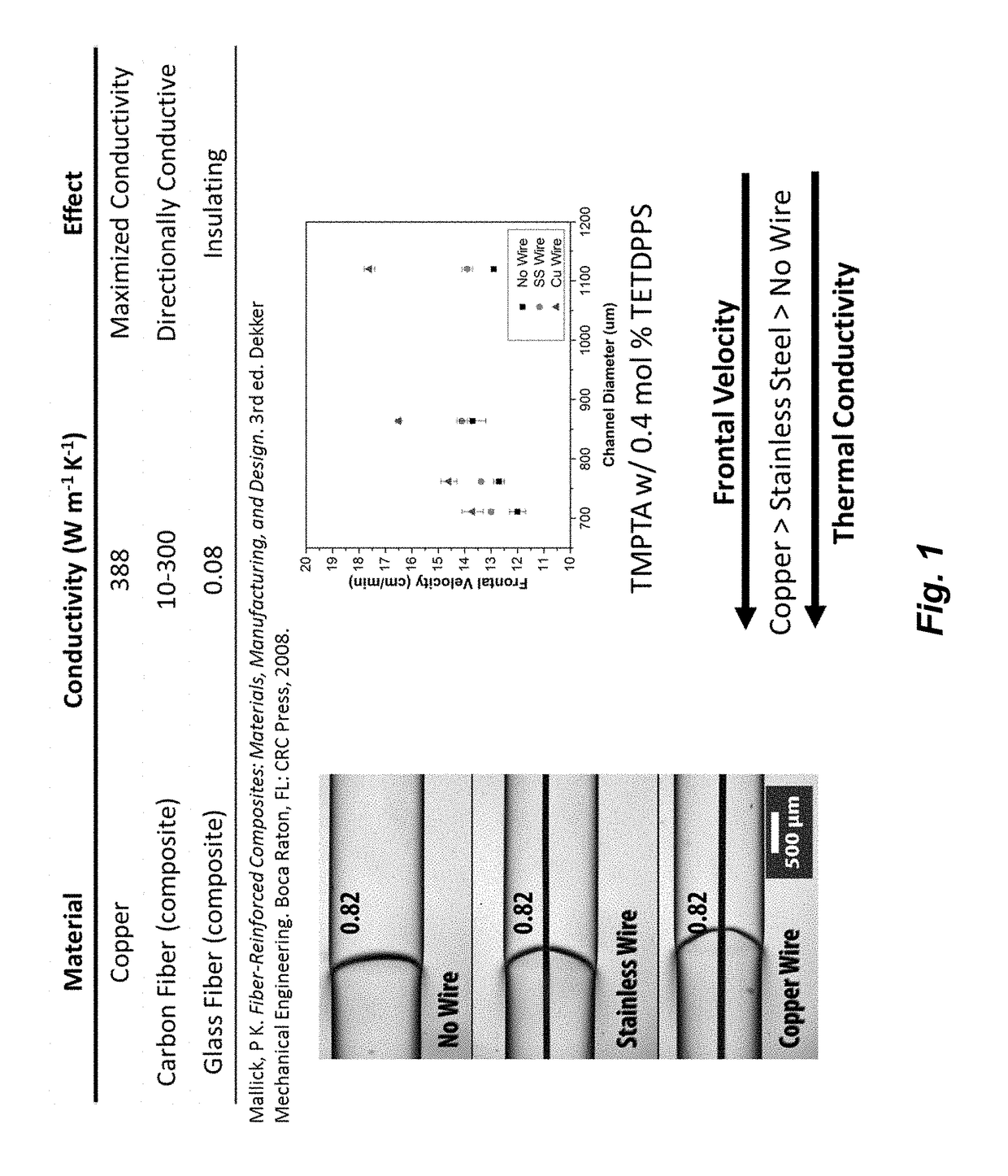Frontal polymerization for fiber-reinforced composites
a fiber-reinforced composite and polymerization technology, applied in textiles, textiles and papermaking, fibre treatment, etc., can solve the problems of increasing the overall cost of fabrication, increasing the cost, and long fabrication, and achieve the effect of prolonging the pot life of the mixtur
- Summary
- Abstract
- Description
- Claims
- Application Information
AI Technical Summary
Benefits of technology
Problems solved by technology
Method used
Image
Examples
example 1
[0091]The concept of thermoset frontal polymerization through a woven carbon fiber matrix has been demonstrated using two distinct chemistries for this process. One is the radical-based FP of a triacrylate, and the other is the ruthenium catalyzed FP of dicyclopentadiene. By using a highly reactive isomer of DCPD, we have been able to reduce the quantity of ruthenium required for curing to cost-effective levels. We have used both single point initiation via a point heat source, and multipoint initiation via resistively heated carbon fiber tows to activate the curing process.
[0092]Multiple 3×6″ and 4×8″ panels have been cured in this way using two separate chemistries to fabricate these frontally polymerized fiber reinforced composites. Other chemistries can be amenable to this technique. The described approach is broadly applicable to several highly reactive polymerizations such as accelerated epoxy polymerization.
Carbon Fiber Frontal Polymerization Technique
[0093]Acrylate Reaction ...
example 2
[0114]DCPD exists as either the endo or exo stereoisomer (Scheme 6). Since nearly all commercially available DCPD is in the endo form, several examples of FROMP have focused on this isomer. Exo-DCPD has some advantageous properties compared to endo-DCPD (Table 1). For example, exo-DCPD undergoes ROMP at a significantly higher rate than the endo-isomer at room temperature. In FROMP, a monomer with a higher polymerization rate would require less catalyst to achieve the same rate of monomer conversion and heat release. Thus, lowering the catalyst concentration is possible while still facilitating rapid FROMP and forming a mechanically robust, cross-linked thermoset similar to poly-(endo-DCPD).
TABLE 1Comparison between the Properties of endo- and exo-DCPD Illustrating the FROMP Advantages of exo-DCPD.Propertyendo-DCPDexo-DCPDΔG‡ for ROMP (kJ / mol)8274Melting point (° C.)32−40Rate coefficient for retro Diels-Alder19.60.947reaction at ca. 200° C. (104 s−1)
[0115]In summary, frontal ring ope...
PUM
| Property | Measurement | Unit |
|---|---|---|
| velocity | aaaaa | aaaaa |
| temperature | aaaaa | aaaaa |
| velocity | aaaaa | aaaaa |
Abstract
Description
Claims
Application Information
 Login to View More
Login to View More - R&D
- Intellectual Property
- Life Sciences
- Materials
- Tech Scout
- Unparalleled Data Quality
- Higher Quality Content
- 60% Fewer Hallucinations
Browse by: Latest US Patents, China's latest patents, Technical Efficacy Thesaurus, Application Domain, Technology Topic, Popular Technical Reports.
© 2025 PatSnap. All rights reserved.Legal|Privacy policy|Modern Slavery Act Transparency Statement|Sitemap|About US| Contact US: help@patsnap.com



